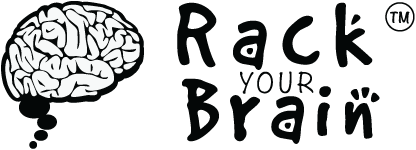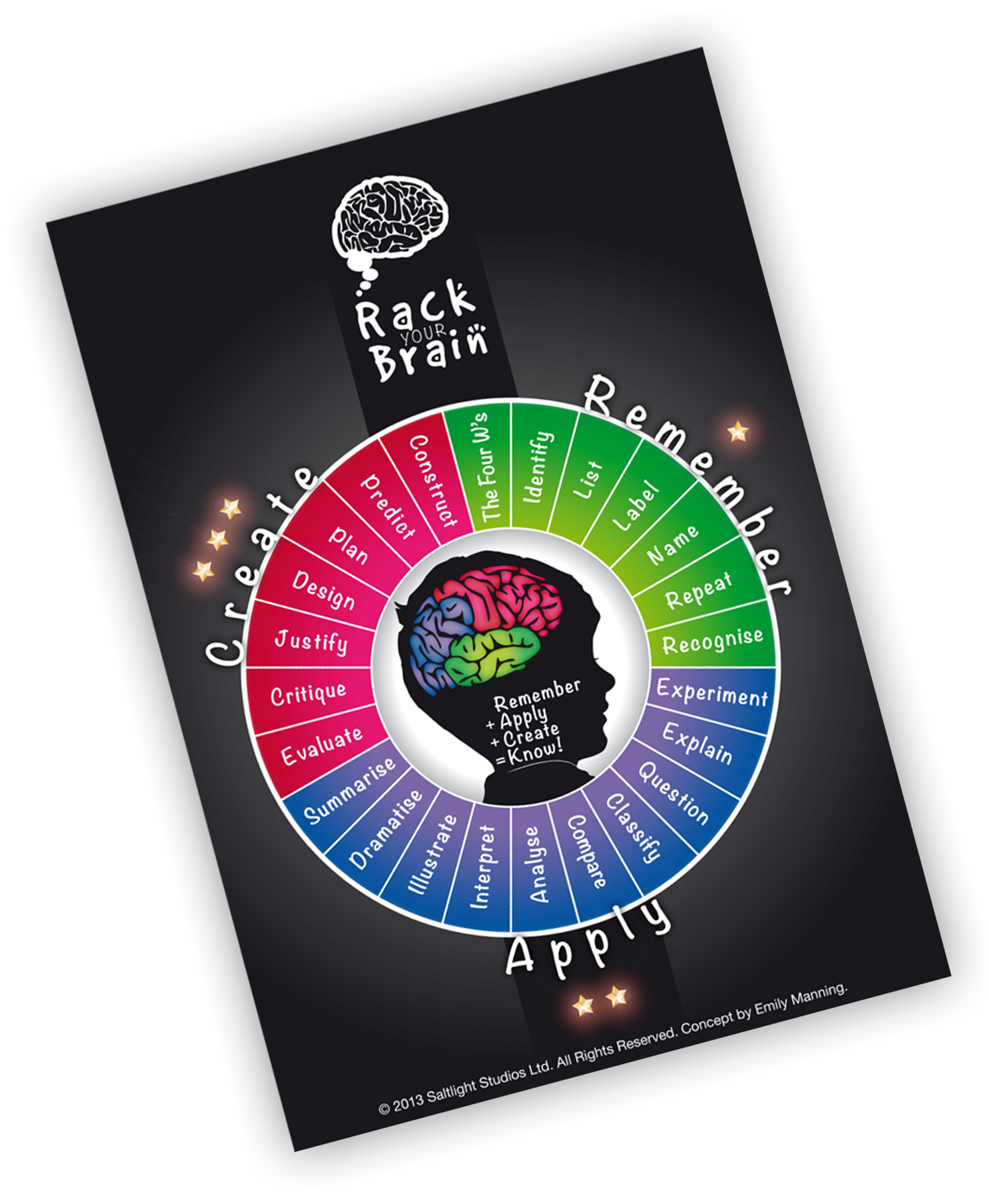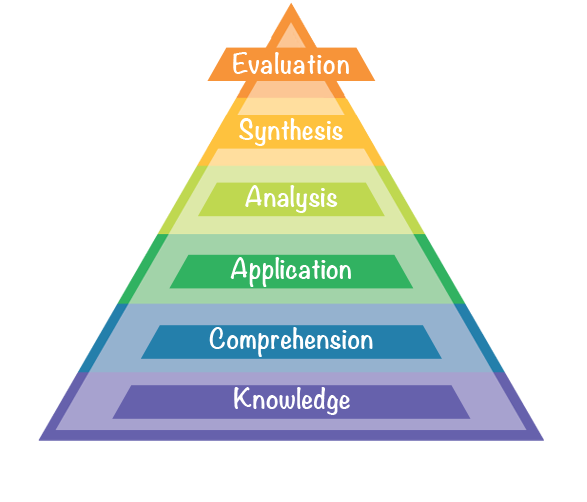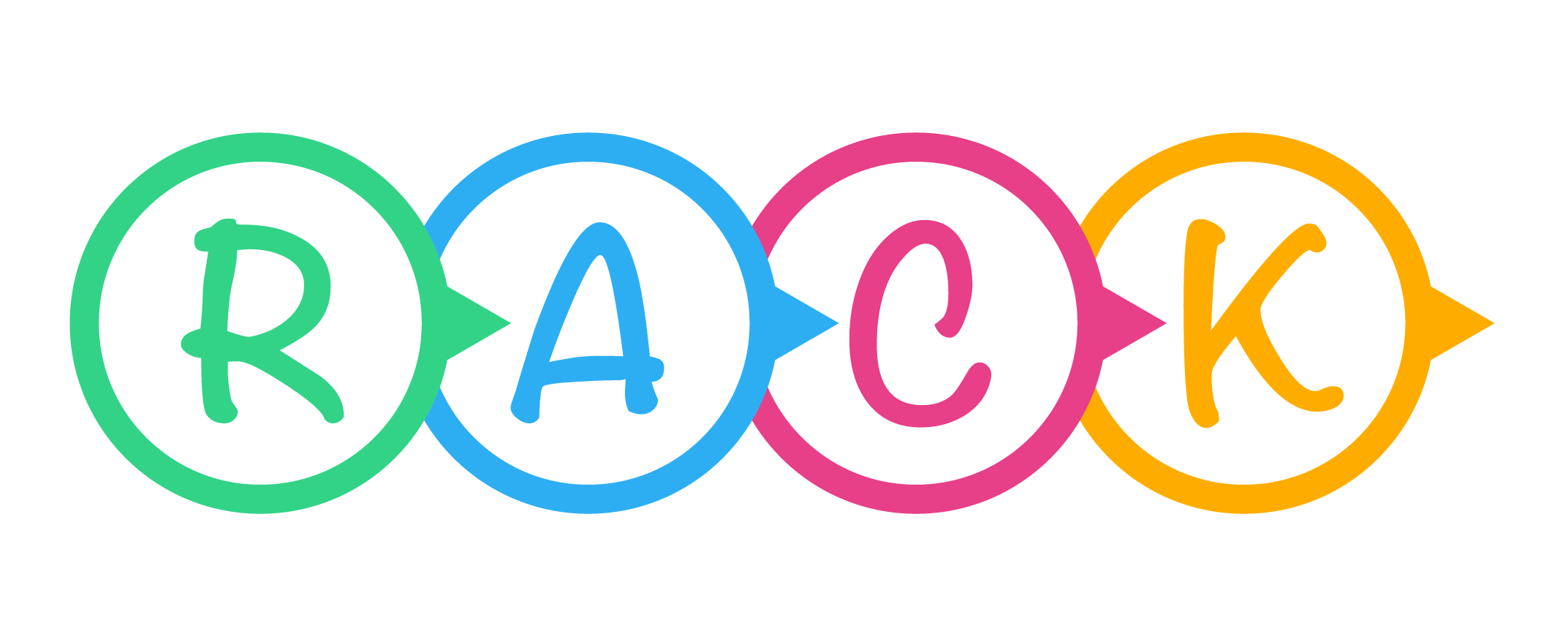What are the core benefits?
How does it benefit pupils and teachers?
EQUAL OPPORTUNITY
RACK™ offers equality of opportunity to all children by removing artificial limits on pupil progress!
EMPOWERS CHILDREN
RACK™ empowers children; it helps them understand how they learn & encourages them.
DEVELOPS CRITICAL THINKING
RACK™ develops critical thinking skills through the understanding of differing verbs.
STRUCTURES LESSONS
RACK™ structures lessons to progress through a hierarchy of learning skills.
The RACK™ Poster
The RACK™ Poster is a high-quality visual resource for the classroom.
The poster itself is A1 size (59.4cm x 84.1cm) and is professionally designed. Printed on heavy-weight, waterproof paper, this poster should withstand the daily wear and tear of classroom activity as well as inspiring your pupils.
The RACK™ Questioning Chart
The RACK™ Questioning Chart is designed to enable teachers and pupils to create differing levels of questions, starting with the most basic and progressing to more complex levels of thinking. The Chart is colour-coded to link with the RACK™ Poster and show the connection between the types of questions asked and level of RACK™ (R, A or C question).
What is the methodology behind RACK™?
Having researched current educational practises and leading theory as part of a Masters Degree, my research suggests positive outcomes for using RACK™ in the classroom. To find out more, please click here.
The RACK™ Goal
The RACK™ method forms the basis for the learning with the Remember, Apply, Create and then Knowledge being the lesson goal. RACK™ allows teachers to structure lessons to give all students the opportunity of higher levels of thinking. Children are then able to anticipate where the lesson is headed due to the organised structure.
In Summary
RACK™ is a teaching method that encourages pupils to think more critically.
A simple structure allows teachers to plan and pupils to anticipate the objective.
Children are empowered as it helps them to understand how they learn.
Knowledge, skills and understanding are developed methodically.
Purchase a RACK™ Kit Today!
Our Kits include a large, waterproof (to reduce accidental classroom damage) A1 RACK™ Poster,
a high-resolution Questioning Chart PDF for class handouts & a Getting Started Guide.
Individual Teaching Kit
£10 + P&P
- One A1 size, RACK™ Poster
- Printed on Waterproof 440gsm Stock
- RACK™ Questioning Chart (PDF)
- RACK™ Getting Started Guide (PDF)
- Plus P&P + VAT
Yeargroup Teaching Kit
£90 + P&P
- Ten A1 size, RACK™ Posters
- Printed on Waterproof 440gsm Stock
- RACK™ Questioning Chart (PDF)
- RACK™ Getting Started Guide (PDF)
- Buy nine kits, get one free!
School Teaching Kit
£170 + P&P
- Twenty A1 size, RACK™ Posters
- Printed on Waterproof 440gsm Stock
- RACK™ Questioning Chart (PDF)
- RACK™ Getting Started Guide (PDF)
- Buy seventeen kits, get three free!
* All prices exclude Postage & Packaging and VAT. P&P costs will depend upon the size of the order and the delivery location. If you have any questions, please contact us by clicking here prior to making a purchase. Please note that our exclusive rate is only available by using one of our secure 'Buy Now' PayPal buttons.
Have a Question? Let us try to answer them.
We've tried to address any questions you might have below, by explaining in a little more detail. If you find that your question is not here, please click here to Contact Us.
RACK™ is based on Bloom’s Taxonomy (1956), later updated by Anderson and Krathwohl (2001) in which a hierarchy of thinking is laid out for teachers to use, starting with the simplest form of thinking (Knowledge/Remembering) and progressing through six stages to the most complex type of thinking (Evaluation/Creating).
You can read more about Bloom's Taxonomy and see some typical 'Pyramid' diagrams by clicking here.
According to Krathwohl (2002), research suggests that almost always, a heavy emphasis is on educational objectives requiring only recognition or recall of information, objectives that fall in the 'Knowledge' category. But, he argues, it is objectives that involve the understanding and use of knowledge, those that would be classified in the categories from 'Comprehension' to 'Synthesis', that are usually considered the most important goals of education.
RACK™ gives the opportunity for all children to work their way through the three main domains instead of just recalling information.
My References / Sources:
Bloom, Benjamin S. Taxonomy of Educational Objectives (1956). Published by Allyn and Bacon, Boston, MA. Copyright (c) 1984 by Pearson Education.
Anderson, L. W., & Krathwohl D. R. (eds.) (2001). A Taxonomy for Learning, Teaching, and Assessing: A Revision of Bloom's Taxonomy of Educational Objectives. New York: Longman
Krathwohl, D.R. (2002). A revision of Bloom’s taxonomy: An overview [Electronic Version]. Theory into Practice, Volume 41, Number 4, Autumn 2002, pp. 212-218.
RACK™ simplifies Bloom’s original Taxonomy into three instead of the six domains, which is more suitable for primary aged children to understand. They consist of Remember, Apply, and Create.
The idea of RACK™ is that if children can first remember, then use that knowledge to solve/compare/explain etc, then finally create something new with the learnt knowledge, then they will “know” something securely and will have “RACKed their brain”.
The verbs in each section of the poster are commonly used in a primary school. RACK™ allows the teacher to not only teach using the verbs, but also allows the children to see and use the verbs themselves and additionally understand the amount of complex thinking involved. If a lesson involves classifying objects, the children know that they are applying their knowledge and therefore using more of their brain than just ‘remembering’. The stars linked to each section also reinforce the idea that more stars uses more complex thinking.
RACK™ also helps teachers to structure a lesson. The first 5 or 10 minutes of a lesson should be dedicated to recalling previous knowledge (Remember). The next 20 or so minutes should be teaching and questioning the children who will apply their knowledge. Finally the remaining part of the lesson allows the children to continue to apply but also gives an opportunity to create something new with the knowledge.
RACK™ therefore allows all children to have the opportunity to “use their whole brain”. It does not place children into groups by ability which often holds children back. Instead, it removes any ceiling from the children.
The learning objective can be linked to the various stages of RACK™. In my classroom, I only have the children write the 'K' in their books.
Here's a practical example:
In Maths:
R: Recall addition
A: Solve addition word problems
C: Create your own addition word problems
K: To solve addition word problems
In Literacy:
R: Recall features of a play script
A: Analyse a play script
C: Create a play script
K: To write a play script using the correct features
RACK™ is also a powerful tool to aide in questioning. It helps teachers to ask more complex thinking questions. A questioning chart has also been linked to the RACK method that allows teachers and students to create questions and understand the types of questions that are being asked.
RACK™ can help children to identify the amount of critical thinking that is needed for answering questions, especially during a test or when answering reading comprehension questions.
For example, if a question is “Who is the main character?”, the children understand that this is a ‘Remember’ question because it is one of the ‘4W’s’. Knowing that this is an R question means that the children can comfortably find and copy the answer from the text, it doesn’t take a lot of their brain. Next, a question might ask, “How is the main character similar to another?” For this question the children can realise that this is an ‘Apply’ question because they need to compare. They can then answer it by using clues from the text and explaining more, thus using more of their brain.
Finally, a question might ask the children to agree or disagree with a character. For this question, the answer cannot be found in the text so they will need to create their own answer using clues from the text, thus using their ‘whole brain’.







